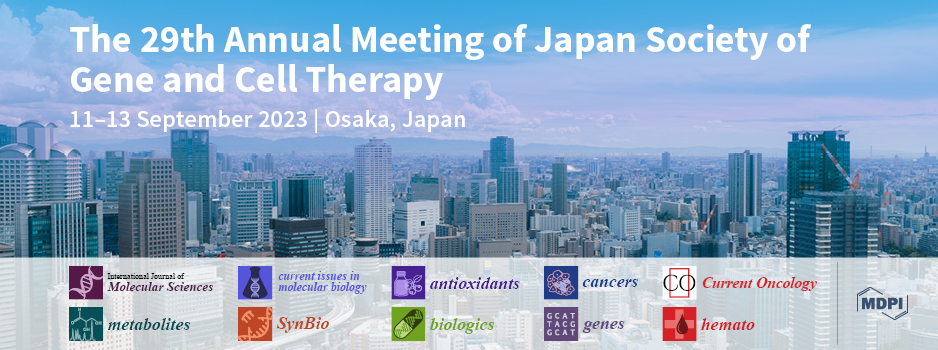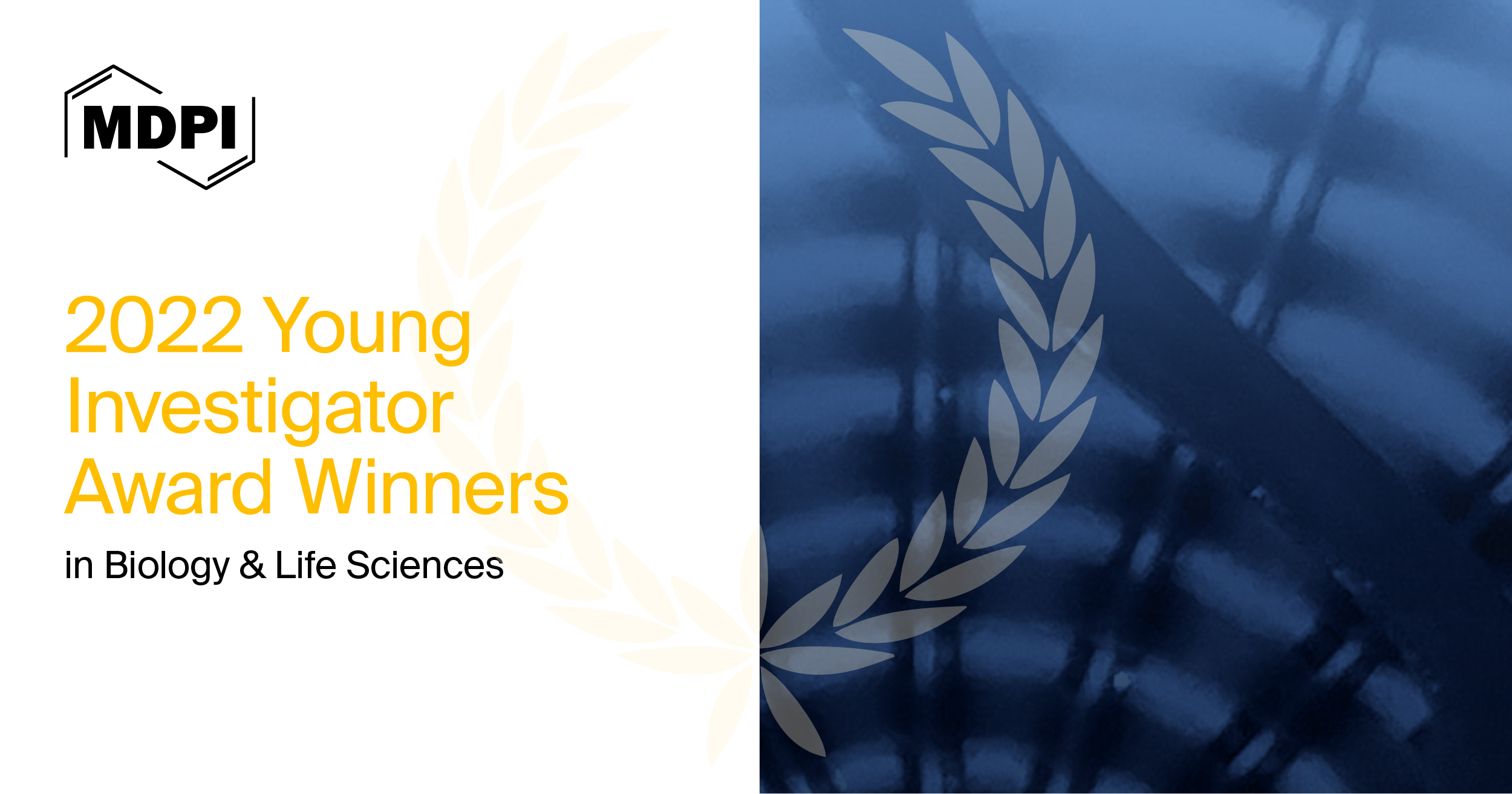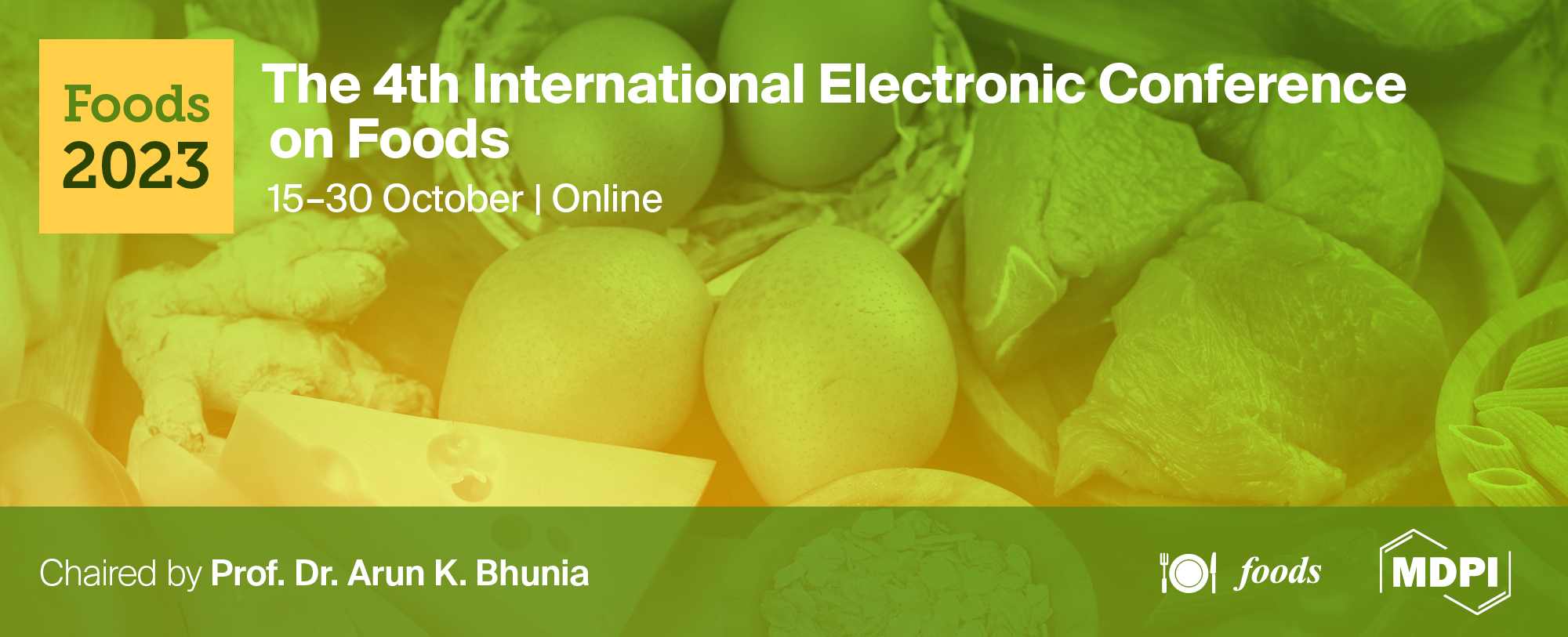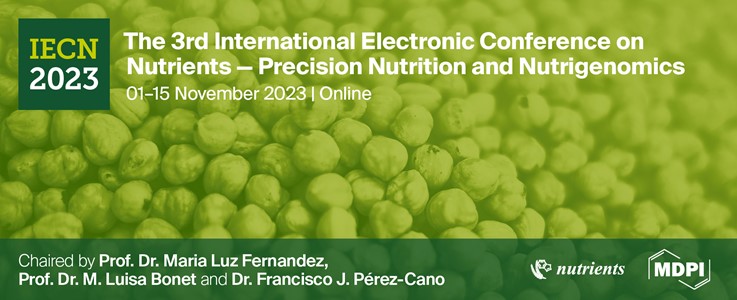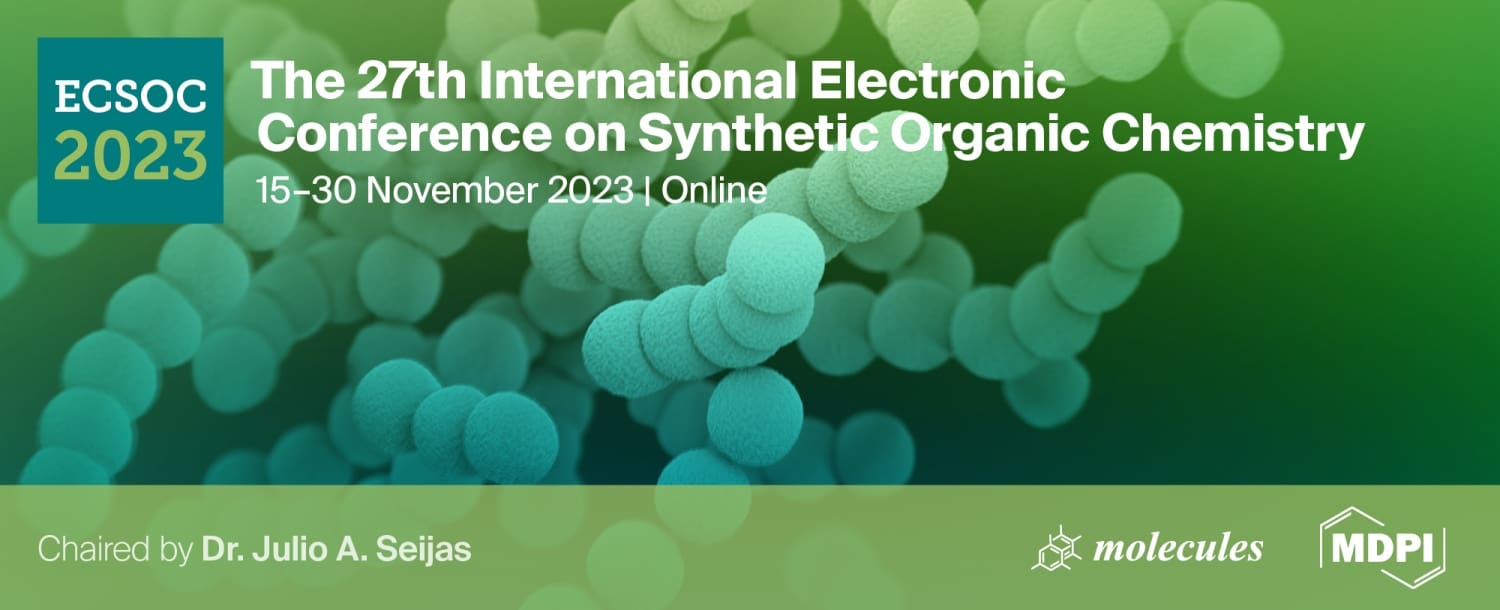-
 Multifunctional Metallothioneins as a Target for Neuroprotection in Parkinson’s Disease
Multifunctional Metallothioneins as a Target for Neuroprotection in Parkinson’s Disease -
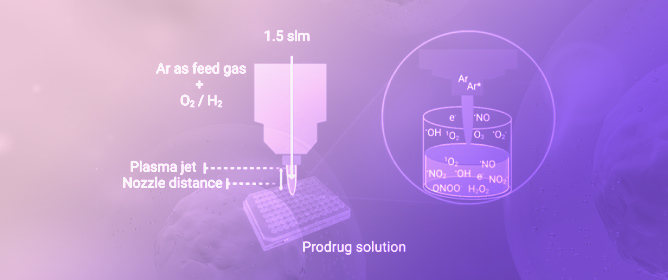 Cold Physical Plasma-Mediated Fenretinide Prodrug Activation Confers Additive Cytotoxicity in Epithelial Cells
Cold Physical Plasma-Mediated Fenretinide Prodrug Activation Confers Additive Cytotoxicity in Epithelial Cells -
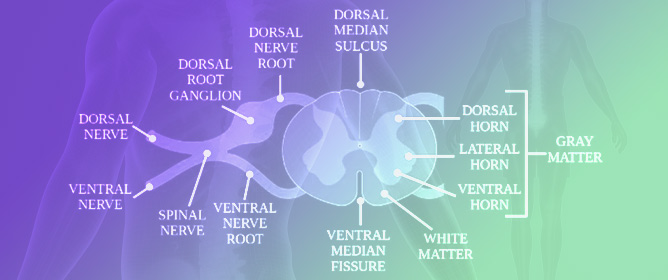 The Influence of Exercise on Oxidative Stress after Spinal Cord Injury: A Narrative Review
The Influence of Exercise on Oxidative Stress after Spinal Cord Injury: A Narrative Review -
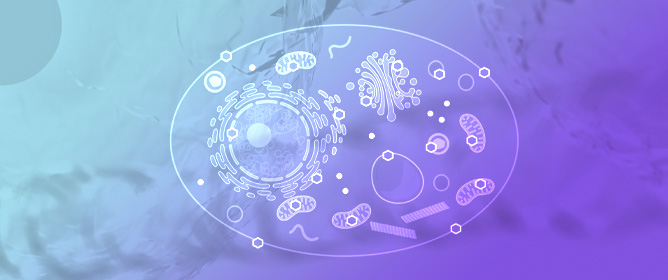 New Insights on the Uptake and Trafficking of Coenzyme Q
New Insights on the Uptake and Trafficking of Coenzyme Q -
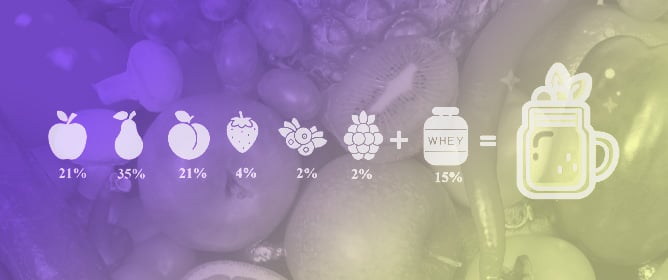 Fermented Whey Ewe’s Milk-Based Fruit Smoothies: Bio-Recycling and Enrichment of Phenolic Compounds and Improvement of Protein Digestibility and Antioxidant Activity
Fermented Whey Ewe’s Milk-Based Fruit Smoothies: Bio-Recycling and Enrichment of Phenolic Compounds and Improvement of Protein Digestibility and Antioxidant Activity
Journal Description
Antioxidants
Antioxidants
is an international, peer-reviewed, open access journal, published monthly online by MDPI. The International Coenzyme Q10 Association (ICQ10A), Israel Society for Oxygen and Free Radical Research (ISOFRR) and European Academy for Molecular Hydrogen Research (EAMHR) are affiliated with Antioxidants and their members receive discounts on the article processing charge.
- Open Access— free for readers, with article processing charges (APC) paid by authors or their institutions.
- High Visibility: indexed within Scopus, SCIE (Web of Science), PubMed, PMC, FSTA, PubAg, CAPlus / SciFinder, and other databases.
- Journal Rank: JCR - Q1 (Food Science & Technology) / CiteScore - Q1 (Food Science)
- Rapid Publication: manuscripts are peer-reviewed and a first decision is provided to authors approximately 14.4 days after submission; acceptance to publication is undertaken in 2.6 days (median values for papers published in this journal in the first half of 2023).
- Recognition of Reviewers: reviewers who provide timely, thorough peer-review reports receive vouchers entitling them to a discount on the APC of their next publication in any MDPI journal, in appreciation of the work done.
- Testimonials: See what our editors and authors say about Antioxidants.
- Companion journal: Oxygen.
Impact Factor:
7.0 (2022);
5-Year Impact Factor:
7.3 (2022)
Latest Articles
Carbon Monoxide-Loaded Red Blood Cell Prevents the Onset of Cisplatin-Induced Acute Kidney Injury
Antioxidants 2023, 12(9), 1705; https://doi.org/10.3390/antiox12091705 (registering DOI) - 01 Sep 2023
Abstract
Cisplatin-induced acute kidney injury (AKI) is an important factor that limits the clinical use of this drug for the treatment of malignancies. Oxidative stress and inflammation are considered to be the main causes of not only cisplatin-induced death of cancer cells but also
[...] Read more.
Cisplatin-induced acute kidney injury (AKI) is an important factor that limits the clinical use of this drug for the treatment of malignancies. Oxidative stress and inflammation are considered to be the main causes of not only cisplatin-induced death of cancer cells but also cisplatin-induced AKI. Therefore, developing agents that exert antioxidant and anti-inflammatory effects without weakening the anti-tumor effects of cisplatin is highly desirable. Carbon monoxide (CO) has recently attracted interest due to its antioxidant, anti-inflammatory, and anti-tumor properties. Herein, we report that CO-loaded red blood cell (CO-RBC) exerts renoprotective effects on cisplatin-induced AKI. Cisplatin treatment was found to reduce cell viability in proximal tubular cells via oxidative stress and inflammation. Cisplatin-induced cytotoxicity, however, was suppressed by the CO-RBC treatment. The intraperitoneal administration of cisplatin caused an elevation in the blood urea nitrogen and serum creatinine levels. The administration of CO-RBC significantly suppressed these elevations. Furthermore, the administration of CO-RBC also reduced the deterioration of renal histology and tubular cell injury through its antioxidant and anti-inflammatory effects in cisplatin-induced AKI mice. Thus, our data suggest that CO-RBC has the potential to substantially prevent the onset of cisplatin-induced AKI, which, in turn, may improve the usefulness of cisplatin-based chemotherapy.
Full article
(This article belongs to the Section Health Outcomes of Antioxidants and Oxidative Stress)
►
Show Figures
Open AccessCommunication
Antioxidant and Cytotoxic Potential of Carlina vulgaris Extract and Bioactivity-Guided Isolation of Cytotoxic Components
by
, , , , , , , and
Antioxidants 2023, 12(9), 1704; https://doi.org/10.3390/antiox12091704 (registering DOI) - 01 Sep 2023
Abstract
Carlina vulgaris is a poorly understood plant in the context of biological activity, despite its widespread application in ethnomedicine in numerous European countries. The aim of this study was to assess the cytotoxic potential of the plant against human colorectal adenocarcinoma (HT29) and
[...] Read more.
Carlina vulgaris is a poorly understood plant in the context of biological activity, despite its widespread application in ethnomedicine in numerous European countries. The aim of this study was to assess the cytotoxic potential of the plant against human colorectal adenocarcinoma (HT29) and to isolate the plant components linked to this effect. Ultra-high performance liquid chromatography with a high-resolution/quadrupole time-of-flight mass spectrometer (UHPLC–HR/QTOF/MS–PDA) was used for the phytochemical characterization of the extract. Liquid–liquid extraction and preparative chromatography were employed for fractionation purposes. Our investigation demonstrated that the ethyl acetate fraction from C. vulgaris showed significant cytotoxicity, and a bioactivity-guided approach led to the isolation of oxylipins, including traumatic acid, pinellic acid, and 9,10-dihydroxy-8-oxsooctadec-12-enic acid. The structures of the compounds were confirmed by nuclear magnetic resonance spectroscopy. Among these compounds, the last one exhibited significant cytotoxicity, though without selectivity, and traumatic acid was characterized by mild cytotoxicity. The cytotoxicity was linked to intracellular reactive oxygen species generation.
Full article
(This article belongs to the Special Issue Antioxidant and Cytotoxic Effects of Phytochemicals)
►▼
Show Figures
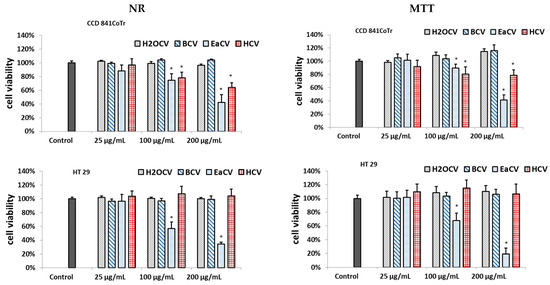
Figure 1
Open AccessArticle
Desmin Reorganization by Stimuli Inducing Oxidative Stress and Electrophiles: Role of Its Single Cysteine Residue
Antioxidants 2023, 12(9), 1703; https://doi.org/10.3390/antiox12091703 (registering DOI) - 31 Aug 2023
Abstract
The type III intermediate filament proteins vimentin and GFAP are modulated by oxidants and electrophiles, mainly through perturbation of their single cysteine residues. Desmin, the type III intermediate filament protein specific to muscle cells, is critical for muscle homeostasis, playing a key role
[...] Read more.
The type III intermediate filament proteins vimentin and GFAP are modulated by oxidants and electrophiles, mainly through perturbation of their single cysteine residues. Desmin, the type III intermediate filament protein specific to muscle cells, is critical for muscle homeostasis, playing a key role in sarcomere organization and mitochondrial function. Here, we have studied the impact of oxidants and cysteine-reactive agents on desmin behavior. Our results show that several reactive species and drugs induce covalent modifications of desmin in vitro, of which its single cysteine residue, C333, is an important target. Moreover, stimuli eliciting oxidative stress or lipoxidation, including H2O2, 15-deoxy-prostaglandin J2, and CoCl2-elicited chemical hypoxia, provoke desmin disorganization in H9c2 rat cardiomyoblasts transfected with wild-type desmin, which is partially attenuated in cells expressing a C333S mutant. Notably, in cells lacking other cytoplasmic intermediate filaments, network formation by desmin C333S appears less efficient than that of desmin wt, especially when these proteins are expressed as fluorescent fusion constructs. Nevertheless, in these cells, the desmin C333S organization is also protected from disruption by oxidants. Taken together, our results indicate that desmin is a target for oxidative and electrophilic stress, which elicit desmin remodeling conditioned by the presence of its single cysteine residue.
Full article
(This article belongs to the Special Issue Protein Lipoxidation at the Crossroads between Reactive Lipid Species and Redox Signaling)
►▼
Show Figures
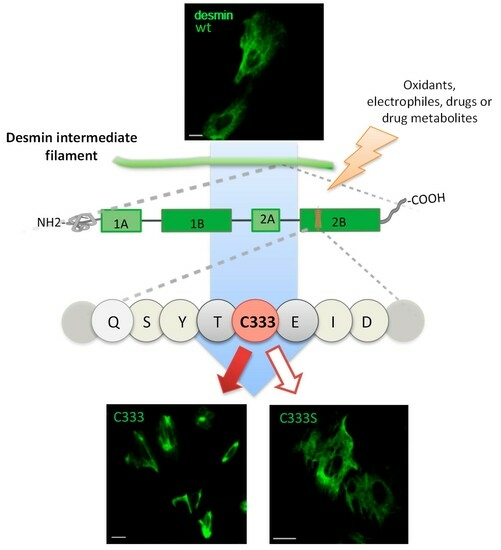
Graphical abstract
Open AccessArticle
Protein Kinase A Controls the Melanization of Candida auris through the Alteration of Cell Wall Components
by
and
Antioxidants 2023, 12(9), 1702; https://doi.org/10.3390/antiox12091702 - 31 Aug 2023
Abstract
Candida auris, a multidrug-resistant fungal pathogen, significantly threatens global public health. Recent studies have identified melanin production, a key virulence factor in many pathogenic fungi that protects against external threats like reactive oxygen species, in C. auris. However, the melanin regulation
[...] Read more.
Candida auris, a multidrug-resistant fungal pathogen, significantly threatens global public health. Recent studies have identified melanin production, a key virulence factor in many pathogenic fungi that protects against external threats like reactive oxygen species, in C. auris. However, the melanin regulation mechanism remains elusive. This study explores the role of the Ras/cAMP/PKA signaling pathway in C. auris melanization. It reveals that the catalytic subunits Tpk1 and Tpk2 of protein kinase A (PKA) are essential, whereas Ras1, Gpr1, Gpa2, and Cyr1 are not. Under melanin-promoting conditions, the tpk1Δ tpk2Δ strain formed melanin granules in the supernatant akin to the wild-type strain but failed to adhere them properly to the cell wall. This discrepancy is likely due to a decreased expression of chitin-synthesis-related genes. Our findings also show that Tpk1 primarily drives melanization, with Tpk2 having a lesser impact. To corroborate this, we found that C. auris must deploy Tpk1-dependent melanin deposition as a defensive mechanism against antioxidant exposure. Moreover, we confirmed that deletion mutants of multicopper oxidase and ferroxidase genes, previously assumed to influence C. auris melanization, do not directly contribute to the process. Overall, this study sheds light on the role of PKA in C. auris melanization and enhances our understanding of the pathogenicity mechanisms of this emerging fungal pathogen.
Full article
(This article belongs to the Special Issue A Lesson from Microorganisms: How to Counteract Oxidative Stress)
►▼
Show Figures
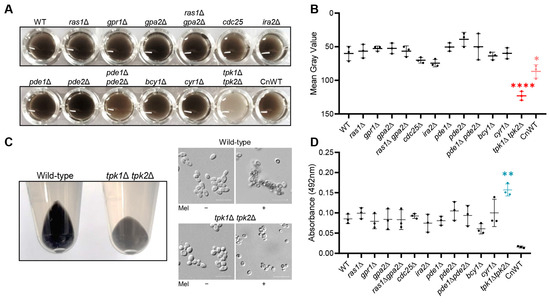
Figure 1
Open AccessArticle
Geranylgeranylacetone Ameliorates Skin Inflammation by Regulating and Inducing Thioredoxin via the Thioredoxin Redox System
by
, , , , , , , , , and
Antioxidants 2023, 12(9), 1701; https://doi.org/10.3390/antiox12091701 - 31 Aug 2023
Abstract
Geranylgeranylacetone (GGA) exerts cytoprotective activity against various toxic stressors via the thioredoxin (TRX) redox system; however, its effect on skin inflammation and molecular mechanism on inducing the TRX of GGA is still unknown. We investigated the effects of GGA in a murine irritant
[...] Read more.
Geranylgeranylacetone (GGA) exerts cytoprotective activity against various toxic stressors via the thioredoxin (TRX) redox system; however, its effect on skin inflammation and molecular mechanism on inducing the TRX of GGA is still unknown. We investigated the effects of GGA in a murine irritant contact dermatitis (ICD) model induced by croton oil. Both a topical application and oral administration of GGA induced TRX production and Nrf2 activation. GGA ameliorated ear swelling, neutrophil infiltration, and inhibited the expression of TNF-α, IL-1β, GM-CSF, and 8-OHdG. GGA’s cytoprotective effect was stronger orally than topically in mice. In vitro studies also showed that GGA suppressed the expression of NLRP3, TNF-α, IL-1β, and GM-CSF and scavenged ROS in PAM212 cells after phorbol myristate acetate stimulation. Moreover, GGA induced endogenous TRX production and Nrf2 nuclear translocation in PAM212 cells (dependent on the presence of ROS) and activated the PI3K-Akt signaling pathway. GGA significantly downregulated thioredoxin-interacting protein (TXNIP) levels in PAM212 cells treated with or without Nrf2 siRNA. After knocking down Nrf2 in PAM212 cells, the effect of GGA on TRX induction was significantly inhibited. This suggests that GGA suppress ICD by inducing endogenous TRX, which may be regulated by PI3K/Akt/Nrf2 mediation of the TRX redox system.
Full article
(This article belongs to the Special Issue Antioxidants for Skin Health)
►▼
Show Figures
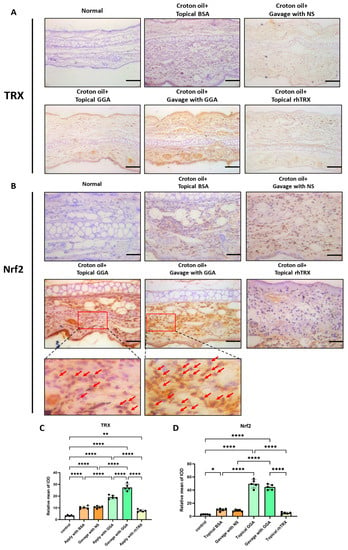
Figure 1
Open AccessReview
Curcumin as a Potential Antioxidant in Stress Regulation of Terrestrial, Avian, and Aquatic Animals: A Review
by
, , , , , and
Antioxidants 2023, 12(9), 1700; https://doi.org/10.3390/antiox12091700 - 31 Aug 2023
Abstract
Stress has brought about a variety of harmful impacts on different animals, leading to difficulties in the management of animal husbandry and aquaculture. Curcumin has been recognized as a potential component to ameliorate the adverse influence of animal stress induced by toxicity, inflammation,
[...] Read more.
Stress has brought about a variety of harmful impacts on different animals, leading to difficulties in the management of animal husbandry and aquaculture. Curcumin has been recognized as a potential component to ameliorate the adverse influence of animal stress induced by toxicity, inflammation, diseases, thermal effect, and so on. In detail, this compound is known to offer various outstanding functions, including antibacterial properties, antioxidant effects, immune response recovery, and behavioral restoration of animals under stress conditions. However, curcumin still has some limitations, owing to its low bioavailability. This review summarizes the latest updates on the regulatory effects of curcumin in terms of stress management in terrestrial, avian, and aquatic animals.
Full article
(This article belongs to the Special Issue Dietary Antioxidants and Animal Nutrition)
►▼
Show Figures
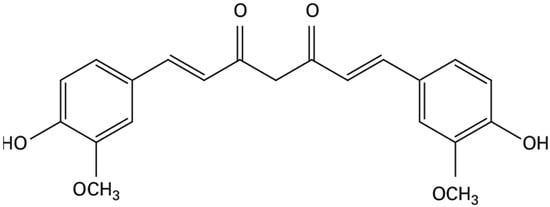
Figure 1
Open AccessArticle
Red Blood Cells from Individuals with Lesch–Nyhan Syndrome: Multi-Omics Insights into a Novel S162N Mutation Causing Hypoxanthine-Guanine Phosphoribosyltransferase Deficiency
by
, , , , and
Antioxidants 2023, 12(9), 1699; https://doi.org/10.3390/antiox12091699 - 31 Aug 2023
Abstract
Lesch–Nyhan syndrome (LN) is an is an X-linked recessive inborn error of metabolism that arises from a deficiency of purine salvage enzyme hypoxanthine-guanine phosphoribosyltransferase (HPRT). The disease manifests severely, causing intellectual deficits and other neural abnormalities, hypercoagulability, uncontrolled self-injury, and gout. While allopurinol
[...] Read more.
Lesch–Nyhan syndrome (LN) is an is an X-linked recessive inborn error of metabolism that arises from a deficiency of purine salvage enzyme hypoxanthine-guanine phosphoribosyltransferase (HPRT). The disease manifests severely, causing intellectual deficits and other neural abnormalities, hypercoagulability, uncontrolled self-injury, and gout. While allopurinol is used to alleviate gout, other symptoms are less understood, impeding treatment. Herein, we present a high-throughput multi-omics analysis of red blood cells (RBCs) from three pediatric siblings carrying a novel S162N HPRT1 mutation. RBCs from both parents—the mother, a heterozygous carrier, and the father, a clinically healthy control—were also analyzed. Global metabolite analysis of LN RBCs shows accumulation of glycolytic intermediates upstream of pyruvate kinase, unsaturated fatty acids, and long chain acylcarnitines. Similarly, highly unsaturated phosphatidylcholines are also elevated in LN RBCs, while free choline is decreased. Intracellular iron, zinc, selenium, and potassium are also decreased in LN RBCs. Global proteomics documented changes in RBC membrane proteins, hemoglobin, redox homeostasis proteins, and the enrichment of coagulation proteins. These changes were accompanied by elevation in protein glutamine deamidation and methylation in the LN children and carrier mother. Treatment with allopurinol incompletely reversed the observed phenotypes in the two older siblings currently on this treatment. This unique data set provides novel opportunities for investigations aimed at potential therapies for LN-associated sequelae.
Full article
(This article belongs to the Special Issue Blood Cells and Redox Homeostasis in Health and Disease)
►▼
Show Figures
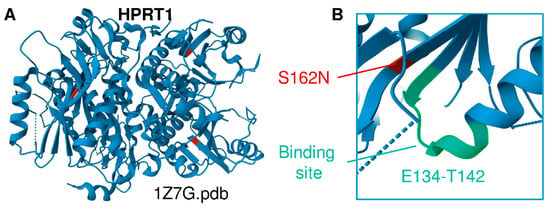
Figure 1
Open AccessArticle
Cocoa Shell Extract Reduces Blood Pressure in Aged Hypertensive Rats via the Cardiovascular Upregulation of Endothelial Nitric Oxide Synthase and Nuclear Factor (Erythroid-Derived 2)-like 2 Protein Expression
by
, , , , and
Antioxidants 2023, 12(9), 1698; https://doi.org/10.3390/antiox12091698 - 31 Aug 2023
Abstract
Cocoa shell is a by-product of cocoa manufacturing. We obtained an aqueous extract (CSE) rich in polyphenols and methylxanthines with antioxidant and vasodilatory properties. We aimed to evaluate the effects of CSE supplementation in aged hypertensive rats on blood pressure and the mechanism
[...] Read more.
Cocoa shell is a by-product of cocoa manufacturing. We obtained an aqueous extract (CSE) rich in polyphenols and methylxanthines with antioxidant and vasodilatory properties. We aimed to evaluate the effects of CSE supplementation in aged hypertensive rats on blood pressure and the mechanism implicated. Eighteen-month-old male and female rats exposed to undernutrition during the fetal period who developed hypertension, with a milder form in females, were used (MUN rats). Systolic blood pressure (SBP; tail-cuff plethysmography) and a blood sample were obtained before (basal) and after CSE supplementation (250 mg/kg; 2 weeks, 5 days/week). Plasma SOD, catalase activity, GSH, carbonyls, and lipid peroxidation were assessed (spectrophotometry). In hearts and aortas from supplemented and non-supplemented age-matched rats, we evaluated the protein expression of SOD-2, catalase, HO-1, UCP-2, total and phosphorylated Nrf2 and e-NOS (Western blot), and aorta media thickness (confocal microscopy). MUN males had higher SBP compared with females, which was reduced via CSE supplementation with a significant difference for group, sex, and interaction effect. After supplementation with plasma, GSH, but not catalase or SOD, was elevated in males and females. Compared with non-supplemented rats, CSE-supplemented males and females exhibited increased aorta e-NOS and Nrf2 protein expression and cardiac phosphorylated-Nrf2, without changes in SOD-2, catalase, HO-1, or UCP-2 in cardiovascular tissues or aorta remodeling. In conclusion, CSE supplementation induces antihypertensive actions related to the upregulation of e-NOS and Nrf2 expression and GSH elevation and a possible direct antioxidant effect of CSE bioactive components. Two weeks of supplementation may be insufficient to increase antioxidant enzyme expression.
Full article
(This article belongs to the Special Issue Antioxidant Foods and Cardiometabolic Health - 2nd Edition)
►▼
Show Figures
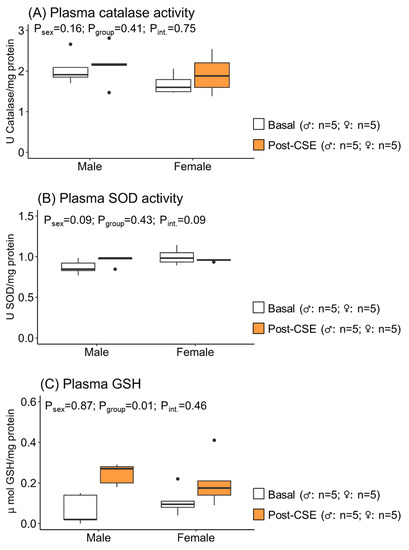
Figure 1
Open AccessArticle
From Waste to Green: Water-Based Extraction of Polyphenols from Onion Peel and Their Adsorption on Biochar from Grapevine Pruning Residues
by
, , , , , , , , , and
Antioxidants 2023, 12(9), 1697; https://doi.org/10.3390/antiox12091697 - 31 Aug 2023
Abstract
Onion peels (OP) are rich in bioactive compounds with a plethora of benefits for human health, but this valuable material is often wasted and underutilized due to its inedibility. Likewise, grapevine pruning residues are commonly treated as agricultural waste, but biochar (BC) obtained
[...] Read more.
Onion peels (OP) are rich in bioactive compounds with a plethora of benefits for human health, but this valuable material is often wasted and underutilized due to its inedibility. Likewise, grapevine pruning residues are commonly treated as agricultural waste, but biochar (BC) obtained from this material has favorable characteristics as an adsorbent. This study investigated the potential of BC in removal of targeted polyphenolic compounds from OP extracts. The OP extracts were obtained adhering to green chemistry principles using deionized water amplified by three methods: maceration (MAC), ultrasound-assisted extraction (UAE), and microwave-assisted extraction (MAE). The extraction efficiency on the polyphenolic profile and antioxidant capacity was investigated with different extraction temperatures and solid-to-liquid (s/l) ratios. For further analysis, UAE at 90 °C with an s/l ratio of 1:100 was used due to higher polyphenolic compound yield. The BC adsorption capacity of individual polyphenols was fitted with the Langmuir and Freundlich isotherm models. Quercetin-3,4′-diglucoside obtained the highest R2 coefficient in both models, and the highest qmax value. The optimum conditions in the dosage experiment suggested an amount of 0.5 g of BC using 3 g/L extracts. The studied BC showed a high affinity for targeted phytochemicals from OP extracts, indicating its potential to be applied for the green adsorption of valuable polyphenolic compounds.
Full article
(This article belongs to the Special Issue Sustainable Production of Natural Antioxidants: Green Extraction, Encapsulation, and Stability in the Final Product)
►▼
Show Figures
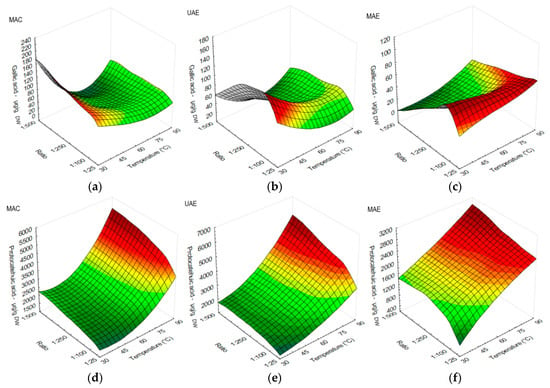
Figure 1
Open AccessReview
Pitfalls of Mitochondrial Redox Signaling Research
by
Antioxidants 2023, 12(9), 1696; https://doi.org/10.3390/antiox12091696 - 31 Aug 2023
Abstract
Redox signaling from mitochondria (mt) to the cytosol and plasma membrane (PM) has been scarcely reported, such as in the case of hypoxic cell adaptation or (2-oxo-) 2-keto-isocaproate (KIC) β-like-oxidation stimulating insulin secretion in pancreatic β-cells. Mutual redox state influence between mitochondrial major
[...] Read more.
Redox signaling from mitochondria (mt) to the cytosol and plasma membrane (PM) has been scarcely reported, such as in the case of hypoxic cell adaptation or (2-oxo-) 2-keto-isocaproate (KIC) β-like-oxidation stimulating insulin secretion in pancreatic β-cells. Mutual redox state influence between mitochondrial major compartments, the matrix and the intracristal space, and the cytosol is therefore derived theoretically in this article to predict possible conditions, when mt-to-cytosol and mt-to-PM signals may occur, as well as conditions in which the cytosolic redox signaling is not overwhelmed by the mitochondrial antioxidant capacity. Possible peroxiredoxin 3 participation in mt-to-cytosol redox signaling is discussed, as well as another specific case, whereby mitochondrial superoxide release is diminished, whereas the matrix MnSOD is activated. As a result, the enhanced conversion to H2O2 allows H2O2 diffusion into the cytosol, where it could be a predominant component of the H2O2 release. In both of these ways, mt-to-cytosol and mt-to-PM signals may be realized. Finally, the use of redox-sensitive probes is discussed, which disturb redox equilibria, and hence add a surplus redox-buffering to the compartment, where they are localized. Specifically, when attempts to quantify net H2O2 fluxes are to be made, this should be taken into account.
Full article
(This article belongs to the Special Issue Mitochondrial Management of ROS in Physiological and Pathological Conditions)
►▼
Show Figures
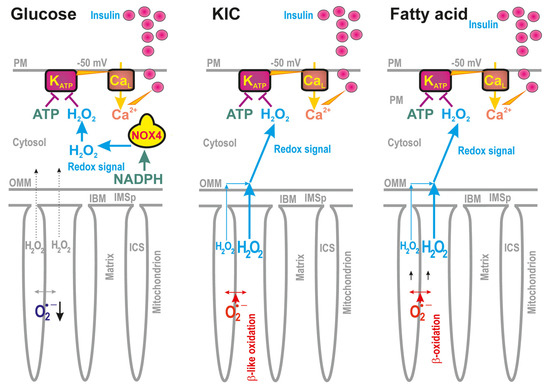
Figure 1
Open AccessArticle
High-Frequency Repetitive Magnetic Stimulation Activates Bactericidal Activity of Macrophages via Modulation of p62/Keap1/Nrf2 and p38 MAPK Pathways
Antioxidants 2023, 12(9), 1695; https://doi.org/10.3390/antiox12091695 - 30 Aug 2023
Abstract
The effects of repetitive magnetic stimulation (rMS) have predominantly been studied in excitable cells, with limited research in non-excitable cells. This study aimed to investigate the impact of rMS on macrophages, which are crucial cells in the innate immune defense. THP-1-derived macrophages subjected
[...] Read more.
The effects of repetitive magnetic stimulation (rMS) have predominantly been studied in excitable cells, with limited research in non-excitable cells. This study aimed to investigate the impact of rMS on macrophages, which are crucial cells in the innate immune defense. THP-1-derived macrophages subjected to a 5 min session of 10 Hz rMS exhibited increased Nrf2 activation and decreased Keap1 expression. We found that activation of the Nrf2 signaling pathway relied on rMS-induced phosphorylation of p62. Notably, rMS reduced the intracellular survival of Staphylococcus aureus in macrophages. Silencing Nrf2 using siRNA in THP-1-derived macrophages or utilizing Nrf2 knockout in alveolar macrophages abolished this effect. Additionally, rMS attenuated the expression of IL-1β and TNF-α inflammatory genes by S. aureus and inhibited p38 MAPK activation. These findings highlight the capacity of rMS to activate the non-canonical Nrf2 pathway, modulate macrophage function, and enhance the host’s defense against bacterial infection.
Full article
(This article belongs to the Special Issue Molecular Targets of Oxidative Stress: Focus on the Nrf2 Signaling Pathway in Health and Disease)
►▼
Show Figures
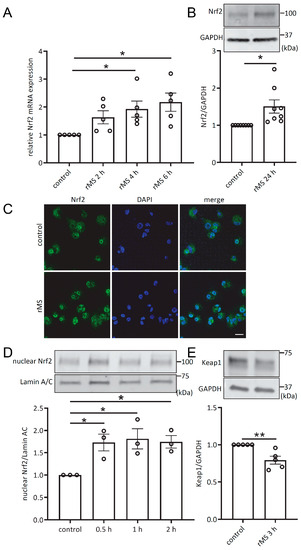
Figure 1
Open AccessArticle
Oxidative and Endoplasmic Reticulum Stress Represent Novel Therapeutic Targets for Choroideremia
Antioxidants 2023, 12(9), 1694; https://doi.org/10.3390/antiox12091694 - 30 Aug 2023
Abstract
Choroideremia (CHM) is a rare X-linked chorioretinal dystrophy, affecting the photoreceptors, retinal pigment epithelium (RPE) and choroid, with no approved therapy. CHM is caused by mutations in the CHM gene, which encodes the ubiquitously expressed Rab escort protein 1 (REP1). REP1 is involved
[...] Read more.
Choroideremia (CHM) is a rare X-linked chorioretinal dystrophy, affecting the photoreceptors, retinal pigment epithelium (RPE) and choroid, with no approved therapy. CHM is caused by mutations in the CHM gene, which encodes the ubiquitously expressed Rab escort protein 1 (REP1). REP1 is involved in prenylation, a post-translational modification of Rab proteins, and plays an essential role in intracellular trafficking. In this study, we examined oxidative and endoplasmic reticulum (ER) stress pathways in chmru848 zebrafish and CHMY42X patient fibroblasts, and screened a number of neuroprotectants for their ability to reduce stress. The expression of the oxidative stress markers txn, cat and sod3a, and the ER stress markers bip, atf4 and atf6, were dysregulated in chmru848 fish. The expression of SOD2 was also reduced in CHMY42X fibroblasts, along with reduced BIP and increased CHOP expression. The lack of REP1 is associated with defects in vesicular trafficking, photoreceptor outer segment phagocytosis and melanosome transport, leading to increased levels of stress within the retina and RPE. Drugs targeting oxidative and ER stress pathways represent novel therapeutic avenues.
Full article
(This article belongs to the Special Issue Oxidative Stress in Retinal Degeneration)
►▼
Show Figures
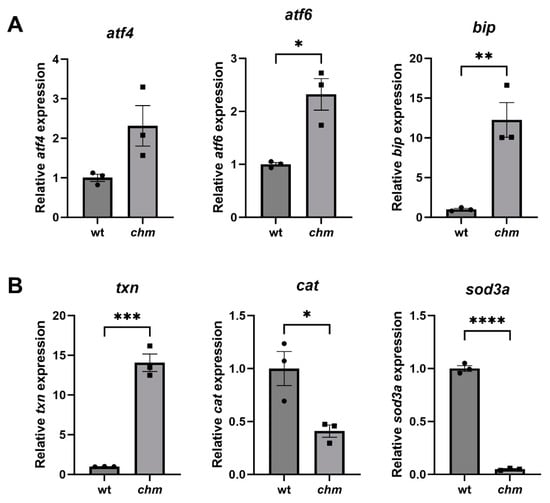
Figure 1
Open AccessArticle
Antioxidant and Anti-Inflammatory Activities of High-Glucosinolate-Synthesis Lines of Brassica rapa
Antioxidants 2023, 12(9), 1693; https://doi.org/10.3390/antiox12091693 - 30 Aug 2023
Abstract
Excessive oxidative stress and inflammatory responses are associated with the development of various diseases, including cancer. Glucosinolates (GSLs) are phytochemicals known for their antioxidant properties, and doubled haploid lines (DHLs) of Brassica rapa with high GSL contents (HGSL) were intentionally developed from two
[...] Read more.
Excessive oxidative stress and inflammatory responses are associated with the development of various diseases, including cancer. Glucosinolates (GSLs) are phytochemicals known for their antioxidant properties, and doubled haploid lines (DHLs) of Brassica rapa with high GSL contents (HGSL) were intentionally developed from two edible subspecies of Brassica rapa: B. rapa subsp. trilocularis and B. rapa subsp. chinensis. The purpose of the present study is to assess the capacity of HGSL DHLs to mitigate oxidative stress and inflammation in lipopolysaccharide (LPS)-stimulated RAW264.7 cells, compared to pak choi as a parental control. Our findings demonstrate that HGSL DH lines effectively suppressed the expression of inducible nitric oxide synthase, leading to the reduced levels of nitric oxide at non-toxic concentrations. Additionally, these lines exhibited scavenging activity against reactive oxygen species and free radicals. The enhanced antioxidant capacity of HGSL DHLs was mechanistically attributed to the upregulation of antioxidant enzymes, such as NADPH quinone oxidoreductase 1 (NQO1), the glutamate–cysteine ligase catalytic subunit (GCLC), and heme oxygenase-1 (HMOX1). Furthermore, we confirmed that these effects were mediated through the nuclear factor erythroid 2-related factor 2 (NRF2) signaling pathway via p38 phosphorylation. Moreover, HGSL DHLs demonstrated inhibitory effects on pro-inflammatory cytokines and signal transducers and activators of transcription 3 (STAT3) phosphorylation. Collectively, our results indicate that HGSL DHLs possess better antioxidant and anti-inflammatory properties compared to the parental control pak choi in LPS-stimulated RAW264.7 cells, suggesting that HGSL DHLs of Brassica rapa could be considered as a beneficial daily vegetable for reducing the risk of inflammation-associated diseases.
Full article
(This article belongs to the Special Issue Application of Antioxidants and Bioactive Compounds in Food from Agriculture to Health Benefits, 2nd Edition)
►▼
Show Figures
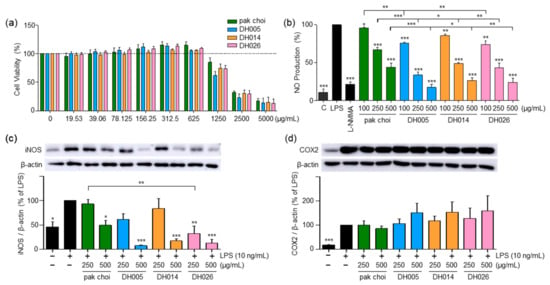
Figure 1
Open AccessArticle
Abscisic Acid and Its Receptors LANCL1 and LANCL2 Control Cardiomyocyte Mitochondrial Function, Expression of Contractile, Cytoskeletal and Ion Channel Proteins and Cell Proliferation via ERRα
by
, , , , , , , and
Antioxidants 2023, 12(9), 1692; https://doi.org/10.3390/antiox12091692 - 30 Aug 2023
Abstract
The cross-kingdom stress hormone abscisic acid (ABA) and its mammalian receptors LANCL1 and LANCL2 regulate the response of cardiomyocytes to hypoxia by activating NO generation. The overexpression of LANCL1/2 increases transcription, phosphorylation and the activity of eNOS and improves cell vitality after hypoxia/reoxygenation
[...] Read more.
The cross-kingdom stress hormone abscisic acid (ABA) and its mammalian receptors LANCL1 and LANCL2 regulate the response of cardiomyocytes to hypoxia by activating NO generation. The overexpression of LANCL1/2 increases transcription, phosphorylation and the activity of eNOS and improves cell vitality after hypoxia/reoxygenation via the AMPK/PGC-1α axis. Here, we investigated whether the ABA/LANCL system also affects the mitochondrial oxidative metabolism and structural proteins. Mitochondrial function, cell cycle and the expression of cytoskeletal, contractile and ion channel proteins were studied in H9c2 rat cardiomyoblasts overexpressing or silenced by LANCL1 and LANCL2, with or without ABA. Overexpression of LANCL1/2 significantly increased, while silencing conversely reduced the mitochondrial number, OXPHOS complex I, proton gradient, glucose and palmitate-dependent respiration, transcription of uncoupling proteins, expression of proteins involved in cytoskeletal, contractile and electrical functions. These effects, and LANCL1/2-dependent NO generation, are mediated by transcription factor ERRα, upstream of the AMPK/PGC1-α axis and transcriptionally controlled by the LANCL1/2–ABA system. The ABA-LANCL1/2 hormone-receptor system controls fundamental aspects of cardiomyocyte physiology via an ERRα/AMPK/PGC-1α signaling axis and ABA-mediated targeting of this axis could improve cardiac function and resilience to hypoxic and dysmetabolic conditions.
Full article
(This article belongs to the Special Issue Mitochondrial Oxidative Metabolism in Heart and Muscle)
►▼
Show Figures
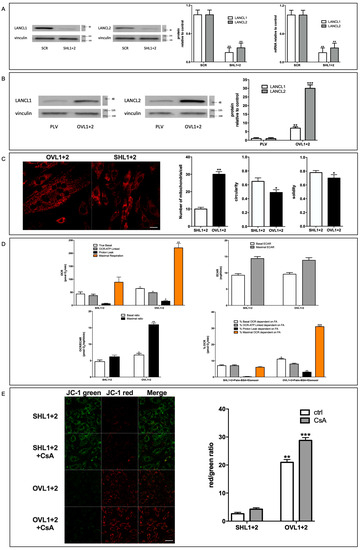
Figure 1
Open AccessArticle
Thermal Stability and Antioxidant Activity of Bioactive Compounds in Bread Enriched with Bee Pollen and Bee Bread
Antioxidants 2023, 12(9), 1691; https://doi.org/10.3390/antiox12091691 - 30 Aug 2023
Abstract
Bee pollen (BP) and bee bread (BB) are natural food sources containing a wide variety of bioactive compounds, complementing their rich nutritional composition. These bee products are being explored to empower functional foods, with the term functionality being dependent on the bioactive compounds
[...] Read more.
Bee pollen (BP) and bee bread (BB) are natural food sources containing a wide variety of bioactive compounds, complementing their rich nutritional composition. These bee products are being explored to empower functional foods, with the term functionality being dependent on the bioactive compounds added to the food matrix. However, there is not enough evidence of the effect of heat on these compounds during food processing and production and how it impacts their biological activity. Here, we enriched traditional bread by adding BP and BB at different proportions of 1 to 5% and tested the thermal stability of their bioactive compounds through several spectroscopic and chromatographic analyses. Adding bee pollen and bee bread to bread resulted in a 4 and 5-fold increase in total phenolic content, respectively. While not all the 38 phenolic and phenolamide compounds identified in the raw BP and BB were detected in the processed bread, phenolamides were found to be more resilient to baking and heat treatment than flavonoids. Still, the enriched bread’s antioxidant activity improved with the addition of BP and BB. Therefore, incorporating bee products into heat-treated products could enhance the functionality of staple foods and increase the accessibility to these natural products.
Full article
(This article belongs to the Special Issue Fortification of Food Products with Antioxidant-Rich Materials - 2nd Edition)
►▼
Show Figures

Figure 1
Open AccessArticle
Molecular Mechanisms of Resistance to Ionizing Radiation in S. cerevisiae and Its Relationship with Aging, Oxidative Stress, and Antioxidant Activity
by
, , , , , and
Antioxidants 2023, 12(9), 1690; https://doi.org/10.3390/antiox12091690 - 30 Aug 2023
Abstract
The repair of the damage produced to the genome and proteome by the action of ionizing radiation, oxidizing agents, and during aging is important to maintain cellular homeostasis. Many of the metabolic pathways influence multiple processes. In this way, this work aims to
[...] Read more.
The repair of the damage produced to the genome and proteome by the action of ionizing radiation, oxidizing agents, and during aging is important to maintain cellular homeostasis. Many of the metabolic pathways influence multiple processes. In this way, this work aims to study the relationship between resistance/response to ionizing radiation, cellular aging, and the response mechanisms to oxidative stress, free radicals, reactive oxygen species (ROS), and antioxidant activity in the yeast S. cerevisiae. Systems biology allows us to use tools that reveal the molecular mechanisms common to different cellular response phenomena. The results found indicate that homologous recombination, non-homologous end joining, and base excision repair pathways are the most important common processes necessary to maintain cellular homeostasis. The metabolic routes of longevity regulation are those that jointly contribute to the three phenomena studied. This study proposes eleven common biomarkers for response/resistance to ionizing radiation and aging (EXO1, MEC1, MRE11, RAD27, RAD50, RAD51, RAD52, RAD55, RAD9, SGS1, YKU70) and two biomarkers for response/resistance to radiation and oxidative stress, free radicals, ROS, and antioxidant activity (NTG1, OGG1). In addition, it is important to highlight that the HSP104 protein could be a good biomarker common to the three phenomena studied.
Full article
(This article belongs to the Special Issue Antioxidants in Radiation Protection, Radiobiology and Radiation - 2nd Edition)
►▼
Show Figures
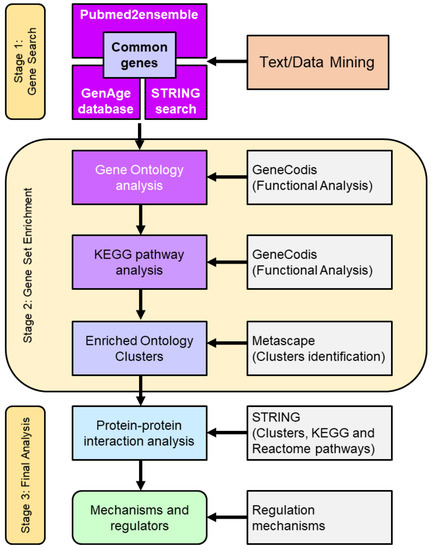
Figure 1
Open AccessArticle
A Reappraisal of the Utility of L-012 to Measure Superoxide from Biologically Relevant Sources
by
, , , , , , , and
Antioxidants 2023, 12(9), 1689; https://doi.org/10.3390/antiox12091689 - 30 Aug 2023
Abstract
The detection of superoxide anion (O2●−) in biological tissues remains challenging. Barriers to convenient and reproducible measurements include expensive equipment, custom probes, and the need for high sensitivity and specificity. The luminol derivative, L-012, has been used to measure O
[...] Read more.
The detection of superoxide anion (O2●−) in biological tissues remains challenging. Barriers to convenient and reproducible measurements include expensive equipment, custom probes, and the need for high sensitivity and specificity. The luminol derivative, L-012, has been used to measure O2●− since 1993 with mixed results and concerns over specificity. The goal of this study was to better define the conditions for use and their specificity. We found that L-012 coupled with depolymerized orthovanadate, a relatively impermeable tyrosine phosphatase inhibitor, yielded a highly sensitive approach to detect extracellular O2●−. In O2●− producing HEK-NOX5 cells, orthovanadate increased L-012 luminescence 100-fold. The combination of L-012 and orthovanadate was highly sensitive, stable, scalable, completely reversed by superoxide dismutase, and selective for O2●− generating NOXes versus NOX4, which produces H2O2. Moreover, there was no signal from cells transfected with NOS3 (NO●) and NOS2(ONOO−). To exclude the effects of altered tyrosine phosphorylation, O2●− was detected using non-enzymatic synthesis with phenazine methosulfate and via novel coupling of L-012 with niobium oxalate, which was less active in inducing tyrosine phosphorylation. Overall, our data shows that L-012 coupled with orthovanadate or other periodic group 5 salts yields a reliable, sensitive, and specific approach to measuring extracellular O2●− in biological systems.
Full article
(This article belongs to the Section ROS, RNS and RSS)
►▼
Show Figures
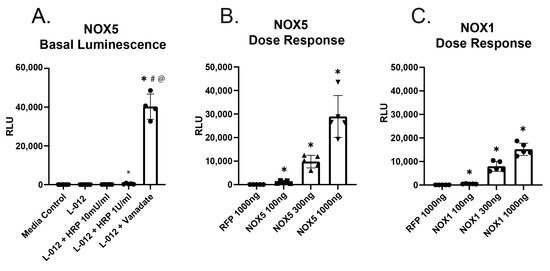
Figure 1
Open AccessArticle
Exogenous Melatonin Protects against Oxidative Damage to Membrane Lipids Caused by Some Sodium/Iodide Symporter Inhibitors in the Thyroid
Antioxidants 2023, 12(9), 1688; https://doi.org/10.3390/antiox12091688 - 29 Aug 2023
Abstract
The thyroid gland is the primary site of sodium/iodide symporter (NIS), an intrinsic plasma membrane protein responsible for the active uptake of iodine, which is indispensable for thyroid hormone synthesis. Since exposure of the thyroid to NIS inhibitors can potentially have harmful effects
[...] Read more.
The thyroid gland is the primary site of sodium/iodide symporter (NIS), an intrinsic plasma membrane protein responsible for the active uptake of iodine, which is indispensable for thyroid hormone synthesis. Since exposure of the thyroid to NIS inhibitors can potentially have harmful effects on the entire organism, it is important to investigate the potential protective effects of known antioxidants, such as melatonin and indole-3-propionic acid (IPA), against pro-oxidative action of classic NIS inhibitors. The study aimed to check if and to what extent melatonin and IPA interact with some confirmed NIS inhibitors regarding their effects on oxidative damage to membrane lipids in the thyroid. For comparison with the thyroid gland, in which NIS is typically present, the liver tissue—not possessing NIS—was applied in the present study. Thyroid and liver homogenates were incubated in the presence of tested NIS inhibitors (i.e., NaClO3, NH4SCN, KSeCN, KNO3, NaF, KClO4, and BPA) in different ranges of concentrations with/without melatonin (5 mM) or IPA (5 mM). The malondialdehyde+4-hydroxyalkenals (MDA + 4-HDA) concentration (LPO index) was measured spectrophotometrically. NaClO3 increased LPO in the thyroid and in the liver, but these pro-oxidative effects were not prevented by either melatonin or IPA. Instead, pro-oxidative effects of NH4SCN observed in both tissues were prevented by both indole substances. KSeCN and NaF increased LPO only in the thyroid, and these pro-oxidative effects were prevented by melatonin and IPA. KNO3, KClO4, and BPA did not increase LPO, which can be due to their low concentrations resulting from restricted solubility. In conclusion, as melatonin prevented oxidative damage to membrane lipids in the thyroid caused by some sodium/iodide symporter inhibitors, this indoleamine shoud be considered as a potential protective agent when produced appropriately in living organisms but also as an exogenous substance recommended to individuals overexposed to NIS inhibitors.
Full article
(This article belongs to the Section Health Outcomes of Antioxidants and Oxidative Stress)
►▼
Show Figures
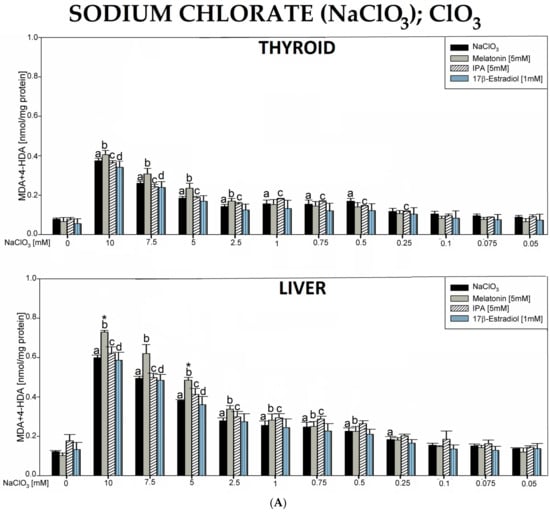
Figure 1
Open AccessSystematic Review
The Association between Malaria and β-Carotene Levels: A Systematic Review and Meta-Analysis
by
, , , and
Antioxidants 2023, 12(9), 1687; https://doi.org/10.3390/antiox12091687 - 29 Aug 2023
Abstract
Background: β-Carotene, which is a prominent carotenoid with notable antioxidant properties, may play a role in countering the oxidative stresses induced by malaria. The association between β-carotene levels and malaria is not yet fully understood, prompting this systematic review and meta-analysis. Methods: A
[...] Read more.
Background: β-Carotene, which is a prominent carotenoid with notable antioxidant properties, may play a role in countering the oxidative stresses induced by malaria. The association between β-carotene levels and malaria is not yet fully understood, prompting this systematic review and meta-analysis. Methods: A rigorous search of databases, including Nursing and Allied Health Premium, EMBASE, MEDLINE, Ovid, PubMed, Scopus, and Google Scholar, was undertaken to collate studies that focused on β-carotene levels in malaria patients. The selected studies underwent critical appraisal, followed by data extraction for a meta-analysis. Results: Of the 2498 records initially identified, 10 were deemed suitable for synthesis. A considerable number of these studies indicated a pronounced reduction in β-carotene levels among malaria patients in contrast with uninfected individuals. The meta-analysis, encompassing 421 malaria patients and 240 uninfected controls, revealed a significant correlation between reduced β-carotene levels and malaria (p < 0.01, Hedges’s g: −1.26, 95% CI: −2.00–(−0.53), I2: 93.86%, seven studies). Conclusions: The conducted systematic review and meta-analysis corroborated the correlation between lower β-carotene levels and malaria. The intricate relationship between malaria and β-carotene merits deeper exploration. A comprehensive understanding of this association might pave the way for innovative therapeutic approaches leveraging the antioxidant attributes of β-carotene to combat malaria-induced oxidative stress.
Full article
(This article belongs to the Special Issue Oxidative Stress in Parasitic Infections)
►▼
Show Figures
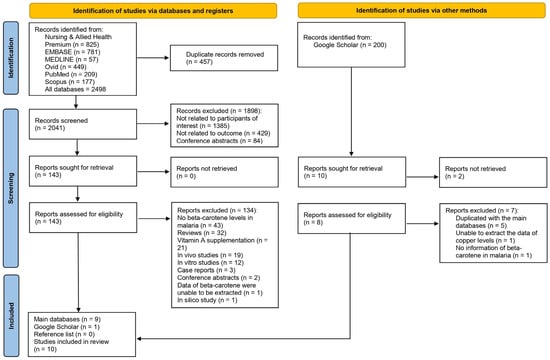
Figure 1
Open AccessArticle
LED Lights Influenced Phytochemical Contents and Biological Activities in Kale (Brassica oleracea L. var. acephala) Microgreens
by
, , , , , , and
Antioxidants 2023, 12(9), 1686; https://doi.org/10.3390/antiox12091686 - 29 Aug 2023
Abstract
Light-emitting diodes (LEDs) are regarded as an effective artificial light source for producing sprouts, microgreens, and baby leaves. Thus, this study aimed to investigate the influence of different LED lights (white, red, and blue) on the biosynthesis of secondary metabolites (glucosinolates, carotenoids, and
[...] Read more.
Light-emitting diodes (LEDs) are regarded as an effective artificial light source for producing sprouts, microgreens, and baby leaves. Thus, this study aimed to investigate the influence of different LED lights (white, red, and blue) on the biosynthesis of secondary metabolites (glucosinolates, carotenoids, and phenolics) and the biological effects on kale microgreens. Microgreens irradiated with white LEDs showed higher levels of carotenoids, including lutein, 13-cis-β-carotene, α-carotene, β-carotene, and 9-cis-β-carotene, than those irradiated with red or blue LEDs. These findings were consistent with higher expression levels of carotenoid biosynthetic genes (BoPDS and BoZDS) in white-irradiated kale microgreens. Similarly, microgreens irradiated with white and blue LEDs showed slightly higher levels of glucosinolates, including glucoiberin, progoitrin, sinigrin, and glucobrassicanapin, than those irradiated with red LEDs. These results agree with the high expression levels of BoMYB28-2, BoMYB28-3, and BoMYB29 in white- and blue-irradiated kale microgreens. In contrast, kale microgreens irradiated with blue LEDs contained higher levels of phenolic compounds (gallic acid, catechin, ferulic acid, sinapic acid, and quercetin). According to the total phenolic content (TPC) and 2,2-diphenyl-1-picrylhydrazyl (DPPH) inhibition assays, the extracts of kale microgreens irradiated with blue LEDs had slightly higher antioxidant activities, and the DPPH inhibition percentage had a positive correlation with TPC in the microgreens. Furthermore, the extracts of kale microgreens irradiated with blue LEDs exhibited stronger antibacterial properties against normal pathogens and multidrug-resistant pathogens than those irradiated with white and red LEDs. These results indicate that white-LED lights are suitable for carotenoid production, whereas blue-LED lights are efficient in increasing the accumulation of phenolics and their biological activities in kale microgreens.
Full article
(This article belongs to the Special Issue Antioxidant and Protective Effects of Plant Extracts)
►▼
Show Figures
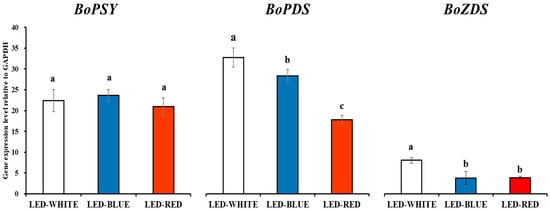
Figure 1

Journal Menu
► ▼ Journal Menu-
- Antioxidants Home
- Aims & Scope
- Editorial Board
- Reviewer Board
- Topical Advisory Panel
- Instructions for Authors
- Special Issues
- Topics
- Sections & Collections
- Article Processing Charge
- Indexing & Archiving
- Editor’s Choice Articles
- Most Cited & Viewed
- Journal Statistics
- Journal History
- Journal Awards
- Society Collaborations
- Conferences
- Editorial Office
Journal Browser
► ▼ Journal BrowserHighly Accessed Articles
Latest Books
E-Mail Alert
News
Topics
Topic in
Antioxidants, BioChem, Biomolecules, Cells, IJMS, Nutrients, Pharmaceutics, Foods
Bioactive Compounds with Application Potentials in Nutraceuticals and Nutricosmetics: Focus on Mechanism of Action and Application Science
Topic Editors: Pujie Shi, Tiantian Lin, Lin Chen, Xin Yang, Caili Fu, Hyun-Gyun Yuk, Rong FanDeadline: 30 September 2023
Topic in
Analytica, Antioxidants, Applied Sciences, Molecules, Separations
New Analytical Methods in Plant Active Components Analysis
Topic Editors: Filomena Lelario, Giuliana Bianco, Radosław KowalskiDeadline: 31 October 2023
Topic in
Antioxidants, Biomolecules, Molecules, Pharmaceutics, Separations
Application of Analytical Chemistry in Exercise Physiology and Pharmacology
Topic Editors: Andrzej Pokrywka, Dorota KwiatkowskaDeadline: 15 November 2023
Topic in
Antioxidants, Applied Biosciences, Biomolecules, Horticulturae, Molecules, Pharmacy, Plants
Bioactive Substances, Pharmacognosy and Metabolomics
Topic Editors: Jiri Gruz, Lucie RárováDeadline: 10 December 2023

Conferences
Special Issues
Special Issue in
Antioxidants
The Versatility of Mitochondrial Calcium: Insights in the Regulation of Redox Signaling
Guest Editor: Giampaolo MorcianoDeadline: 15 September 2023
Special Issue in
Antioxidants
Advances in Anticancer Drugs based on Phytocompounds with Antioxidant Properties
Guest Editors: Gabriela V. Vochita, Anca MironDeadline: 30 September 2023
Special Issue in
Antioxidants
A Lesson from Microorganisms: How to Counteract Oxidative Stress
Guest Editors: Danila Limauro, Emilia PedoneDeadline: 15 October 2023
Special Issue in
Antioxidants
Reactive Oxygen Species Signaling and Antioxidant Defence in Plant Stress Tolerance
Guest Editors: Ashwani Pareek, Mohan B. Singh, Sneh Lata Singla-Pareek, Anil K. SinghDeadline: 30 October 2023
Topical Collections
Topical Collection in
Antioxidants
Advances in Antioxidant Ingredients from Natural Products
Collection Editors: Carla Susana Correia Pereira, Lillian Barros





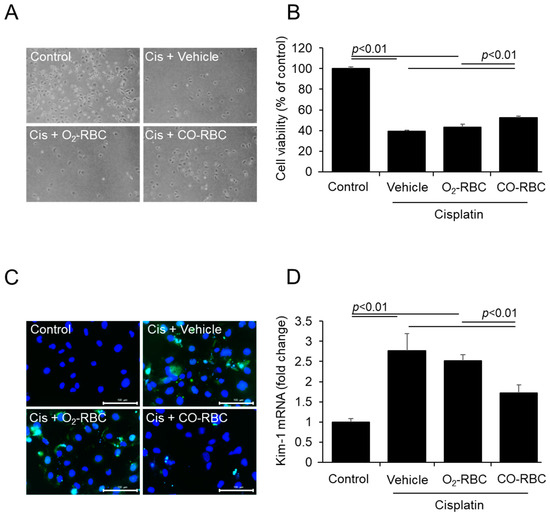

.jpg)







